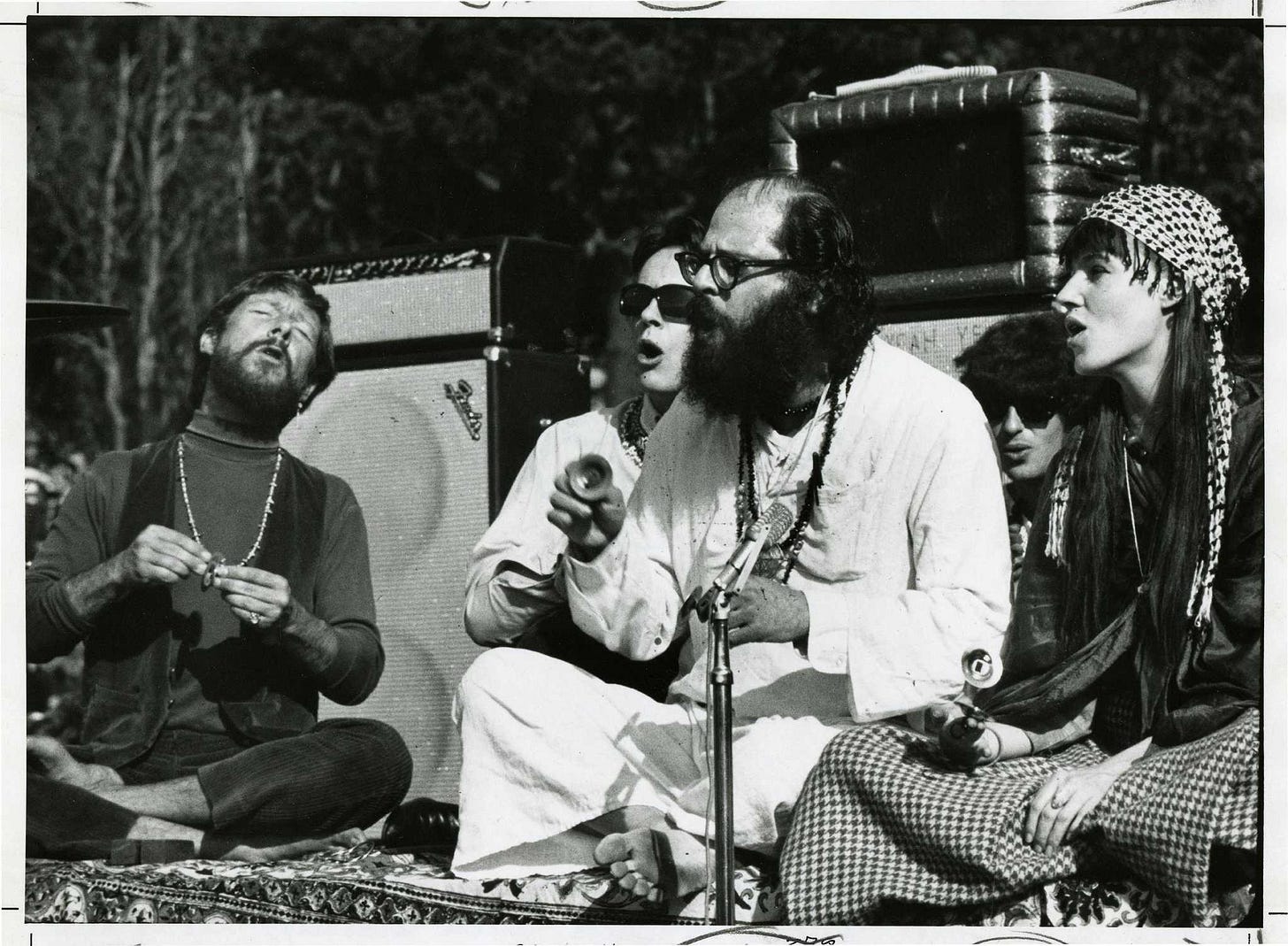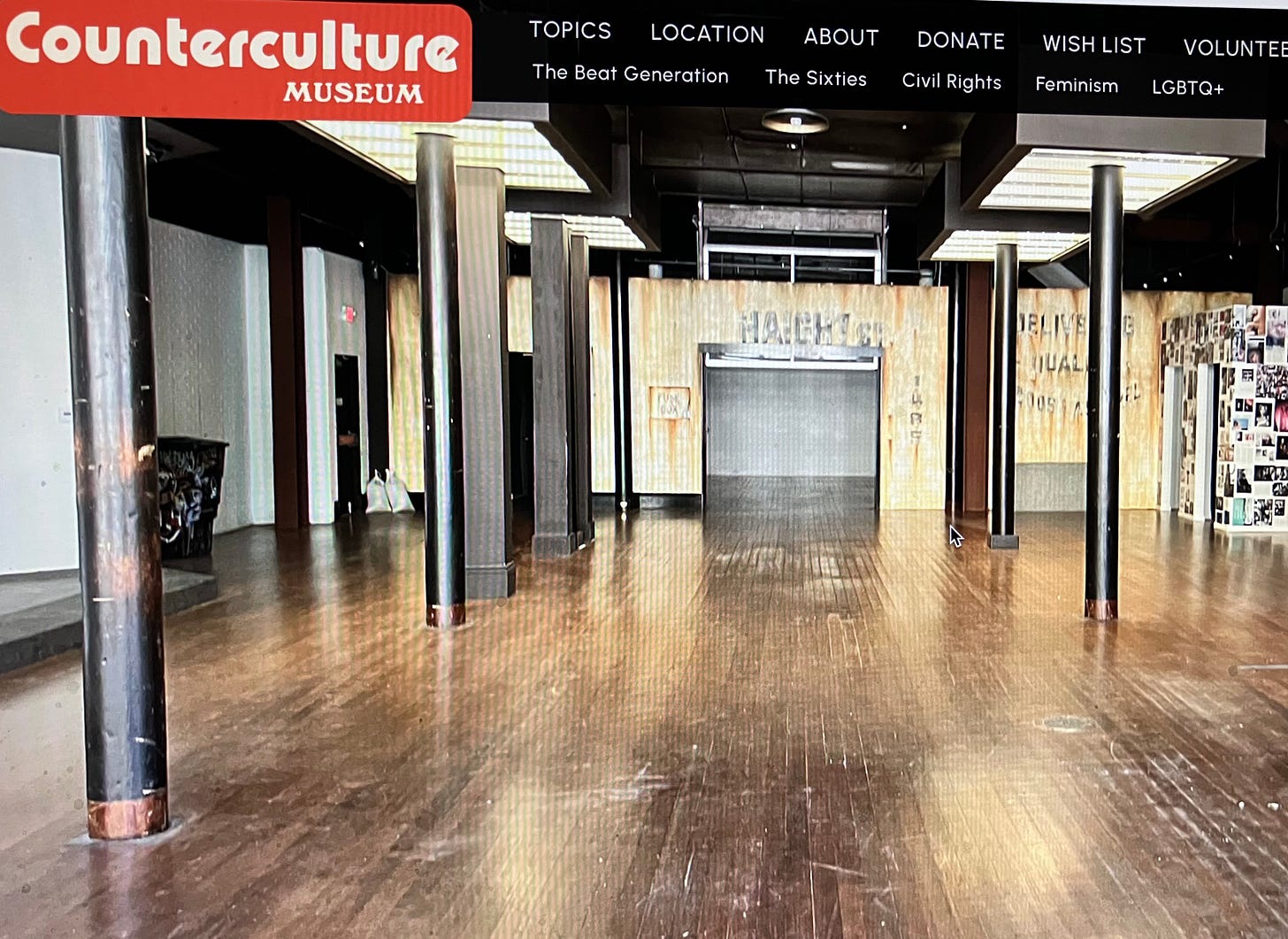By Jonah Raskin
IF YOU HAVEN’T heard of ‘the Haight’, which is also known as the Haight-Ashbury, or ‘the Hashbury’ as gonzo journalist Hunter S. Thompson called it, you must have been asleep for the past half-century and missed the stories about the kids who ran away from their homes, the ‘crash pads’, the Summer of Love, and the hippies on ‘Hippie Hill’ smoking marijuana.
Paul McCartney and George Harrison both visited the neighborhood in 1967, the same magical year that saw the release of their Sgt Pepper album and the ‘Human Be-In’, when Jerry Garcia and the Grateful Dead, Janis Joplin and Big Brother & the Holding Company entertained the thousands of beatniks, hipsters, vagabonds, day trippers, freaks and more who showed up in Golden Gate Park.
The crowds who joined forces at the very start of that year were also regaled by the likes of Allen Ginsberg, Timothy Leary and Lawrence Ferlinghetti, Michael McClure, Gary Snyder and Lenore Kandel, author of The Love Book, as the rock stars of the day shared a stage with the radical poets of that remarkable scene.
For a time, Joplin, members of the Dead and the Airplane all lived in the Haight and made music there. They were shaped by its unique counterculture and they certainly helped to shape it.
Also billed as a ‘Gathering of the Tribes’ and often described by cultural historians as the event that led to the Summer of Love, the Human Be-In could have been promoted as a ‘Reunion of the Beats’, too. Jack Kerouac was one of the few Beat Generation writers not present in person, though he was surely there in spirit.
Pictured above: Gary Snyder, Michael McClure, Allen Ginsberg and his friend Maretta Greer at the Human Be-In on January 14th, 1967
McCartney heard rumors of the goings-on in the Haight and visited on April 4th that significant year. At the Fillmore Auditorium, he listened to a rehearsal by the Jefferson Airplane. At Marty Balin’s and Jack Casady's apartment they listened to an acetate (a type of pre-release phonograph) of the Beatles' forthcoming and soon-to-be groundbreaking album, which emerged eventually in June. Harrison came later, on August 7th, and encountered a rather unnerving body of fanatical followers.
Now, all that glorious musical history and much more will be documented in exhibitions in a new museum in San Francisco located on the corner of Haight and Ashbury where the Beats met the hippies and a new and thrilling version of rock’n’roll blossomed.
Called the Counterculture Museum and aimimg to open this spring, it will accentuate the 1960s of sex and drugs and rock’n’roll alongside political protest. Estelle and Jerry Cimino, the founders of the new centre, are also the people behind the Beat Museum in North Beach which is catty-cornered from City Lights Bookstore on Columbus Avenue.
If ever the time was ripe for a counterculture museum it’s now, while hippies are still alive and well in San Francisco and elsewhere and when genuine countercultures are under attack by powerbrokers in Washington DC, New York, Hollywood and capitals all around the world. Reaction seems to be in the saddle and currently rides humanity.
Pictured above: The former retail space soon to be SF’s Counterculture Museum
The Ciminos hope that fans of the Beats and lovers of the hippie era will visit the Beat Museum and then head over to the Counterculture Museum, or vice versa. Jerry Cimino says that tourists and locals who show up at the Beat Museum are more familiar with the hippies than the Beats. That’s understandable.
Remember that the Beats gathered at intimate coffee houses, listened to jazz and read poetry in small groups. Even the audience at the Six Gallery reading numbered only about one hundred people.
Hippies attended mega events such as Woodstock, listened to rock music live and on record and sang along communally with the Beatles on lyrics to songs like ‘All You Need is Love’ and ‘Hey Jude’. In short, the hippies belonged to a mass phenomenon.
Estelle Cimino, the executive director of the Counterculture Museum, grew up on the East Coast and came to California with her husband in the late 1980s. As a young woman she smoked pot, listened to the Beach Boys and tried LSD but she never ‘dropped out’ and joined a commune or a collective. She has worked almost her entire adult life.
Speaking personally, I didn't think of myself as a hippie until I arrived in San Francisco in the summer of 1974. San Francisco hippies seemed different – kinder, more curious, more global and psychedelic – from hippies in New York, where I had been living since the fall of 1967.
Jerry Cimino worked for IBM and American Express. ‘I was a good corporate soldier,’ he told me. But like many of the original 1950s Beats, he was attracted to the subculture that paralleled and challenged Madison Avenue and Eisenhower-era conformity.
There was not yet a named ‘counterculture’ in the early and mid-1960s, though there were ‘adversary cultures’, as Professor Lionel Trilling called them. Professor Theodore Roszak coined the phrase in 1969, though he spelled it ‘counter culture’ – two words – in his celebrated and influential book The Making of a Counter Culture.
A teacher introduced Jerry to Ferlinghetti’s poetry and, on his own, he discovered the work of Kerouac and Ginsberg. From then on he was hooked on the Beats though it would take decades before he and Estelle opened a museum to honor them and their work.
Estelle told me: ‘I want the Counterculture Museum to make people more conscious than they now are, and persuade them to rise up for something they believe in – justice, equality, peace, clean air and clean water – not to protest against anything.’
She added, ‘We seem to be going backward, which makes it important to educate young people about the past so they understand that positive change can happen today just like it did in the 1960s and 1970s.’
At Coffee to the People, a cafe on Masonic Avenue that looks and feels like a relic of the past, Stannous Flouride tells me, ‘There’s not much of a counterculture anymore.’ Flouride has lived in the same apartment in the Haight for decades and doesn't plan to vacate.
He’s probably the world’s foremost authority on the Haight, the compact neighborhood that stretches from the Golden Gate Park Panhandle to Baker Street and from Fell to Oak. Flouride’s website, stanflouride.com, reproduces rare posters from the heyday of the Haight, including one from 1967 that promotes a ‘Digger Clean-In’ and another for the Haight Ashbury Free Clinic.
The Diggers took on the responsibility of sweeping sidewalks and getting rid of trash. They borrowed their name from a group of seventeenth-century English utopians who wanted to turn the world upside down, elevate the lowly and deflate the high and mighty.
‘The 1960s counterculture was a pebble in a pond with ripples spreading outward into the larger society,’ the Digger website proclaims. ‘The San Francisco Diggers at the center of that wave embodied the cultural changes still felt and seen today worldwide.’
In May 1967, John Phillips of the Mamas & the Papas and Scott McKenzie, who released two solo albums, one in 1967 and the other in 1970, used the song ’San Francisco (Be Sure to Wear Flowers in Your Hair)’ to promote the Monterey International Pop Music Festival, a key forerunner of Woodstock.
These days Gus’s Market, a grocery on Haight, sells roses for $19 each, though there’s no sign of what was once called ‘flower power’. But don’t be surprised when hippies and their ilk show up at the Counterculture Museum with flowers in their hair.
See also: ‘Counterculture concept revealed’, October 8th, 2024




Marvelous celebration of the neighborhood, its history and Estelle and Jerry's new venture. Can't wait to get up there and see it when it opens. Thoroughly enjoyed your piece Jonah!
Thanks for sharing this information. I’ve been eager to visit Haight-Asbury area for years now, and this gives me one more reason to bump it higher on my list. I’m fascinated with that time period and the counterculture movement, so this will truly be a treat to check out.